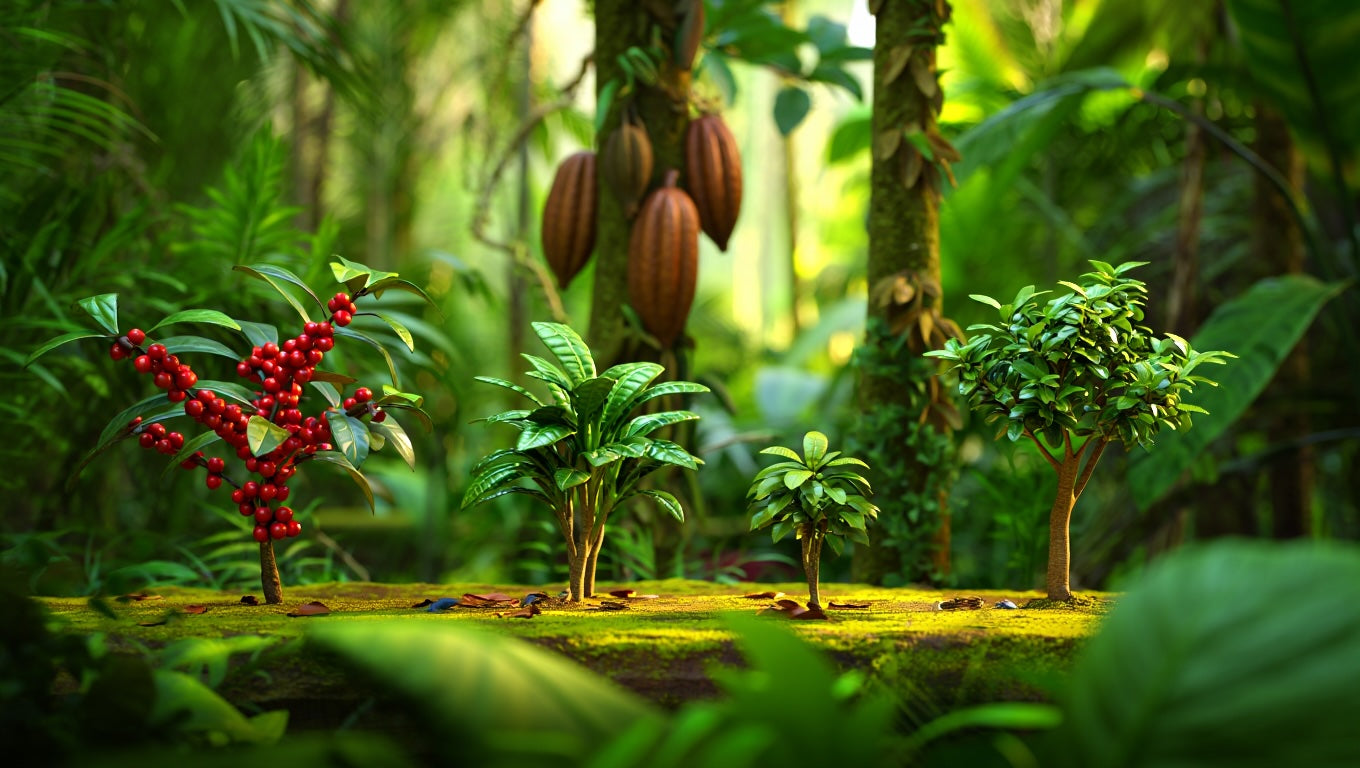Most of us know caffeine as that familiar little boost we get from our morning coffee or afternoon tea. But behind this simple habit lies a fascinating story about how caffeine came to be one of the most successful compounds in the plant kingdom. Even more interesting? Its close chemical relative, paraxanthine, doesn't really exist in nature at all. So why do plants make caffeine but not paraxanthine? And why are we just now discovering the potential benefits of paraxanthine for ourselves?
The Origins of Caffeine in Nature
Plants didn’t stumble onto caffeine by chance. Several species (coffee, tea, cacao, guarana, yerba mate, and others) each independently evolved to produce caffeine. Scientists call this convergent evolution: different plants, facing similar environmental challenges, ended up finding the same chemical solution.
Caffeine gives these plants a leg up in a few different ways:
-
Natural pest control: For insects, caffeine is toxic. It protects leaves, seeds, and young shoots by disabling or even killing bugs that dare to munch on them.
-
Territorial advantage: When caffeine-rich leaves fall to the ground, they release caffeine into the soil, preventing nearby seeds from germinating and reducing competition for water, nutrients, and sunlight.
-
Pollinator boost: Amazingly, some plants even lace their nectar with tiny amounts of caffeine. Research shows it helps bees remember which flowers to visit, making pollination more efficient.
Because caffeine provides such versatile protection and advantages, it became nature's go-to molecule in multiple plant families.
How Caffeine Interacts with Animals—Especially Us
Caffeine may have evolved as a defense mechanism, but for larger animals—and especially for humans—it has an entirely different effect.
When we drink coffee or tea, our bodies start breaking down caffeine almost immediately. The liver does most of this work using an enzyme called CYP1A2. Roughly 80% of the caffeine we consume gets converted into paraxanthine, while smaller amounts turn into theobromine and theophylline.
Why Paraxanthine Never Evolved in Plants
For plants, paraxanthine simply doesn’t serve any purpose. It doesn’t protect them from pests, it doesn’t help suppress neighboring plants, and it doesn’t offer benefits to pollinators. Without a biological incentive, plants never evolved a pathway to make paraxanthine.
Why Humans Are Finally Paying Attention to Paraxanthine
While nature had no reason to produce paraxanthine, science is starting to recognize its value for us.
Emerging research suggests that paraxanthine offers a cleaner, more predictable stimulation than caffeine:
-
Smoother energy: It still blocks adenosine receptors (which keep us awake), but seems to cause fewer jitters and less anxiety.
-
Better for sleep: Because it clears from our systems faster than caffeine, it’s less likely to keep us up at night.
-
Sharper focus: Many early studies suggest paraxanthine may help promote a steadier kind of cognitive enhancement.
-
Less strain on the body: Compared to caffeine, paraxanthine appears to place less stress on the heart and blood vessels.
In short, paraxanthine delivers many of caffeine's best benefits—but with fewer of its downsides.
Rarebird: Tapping Into Nature’s Smarter Stimulant
Caffeine may have evolved to serve plants. But humans have always had a different relationship with it—we essentially modify it in real time, turning it into paraxanthine inside our bodies.
At Rarebird, we saw no reason to make people wait for their livers to do this metabolic work. Through advanced biotechnology, we go straight to the good stuff: paraxanthine, delivered directly into your morning cup.
Rarebird's Px Coffee offers clean, smooth energy—without the jitters, crashes, or sleepless nights so many people experience with regular coffee. In doing so, we bridge the best of nature with modern science, creating a better, smarter way to enjoy coffee.














Share:
Low-Acid Coffee: Fact or Fiction?
How Caffeine Disrupts Your Sleep: Why Paraxanthine Is Cleaner